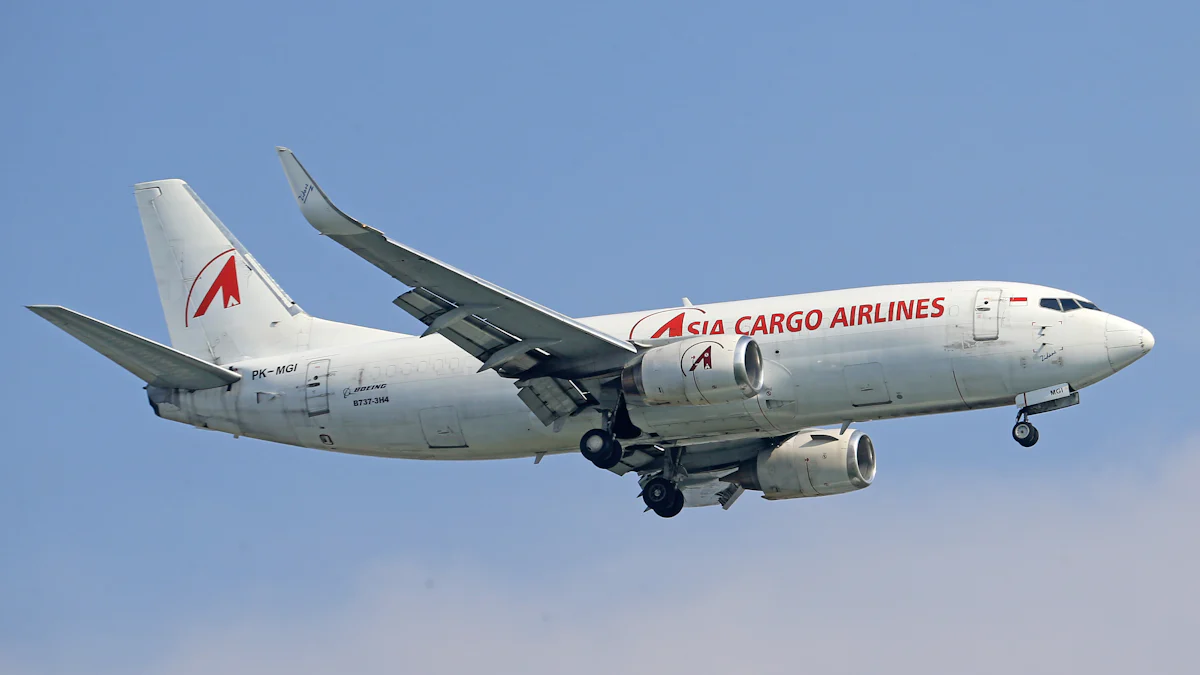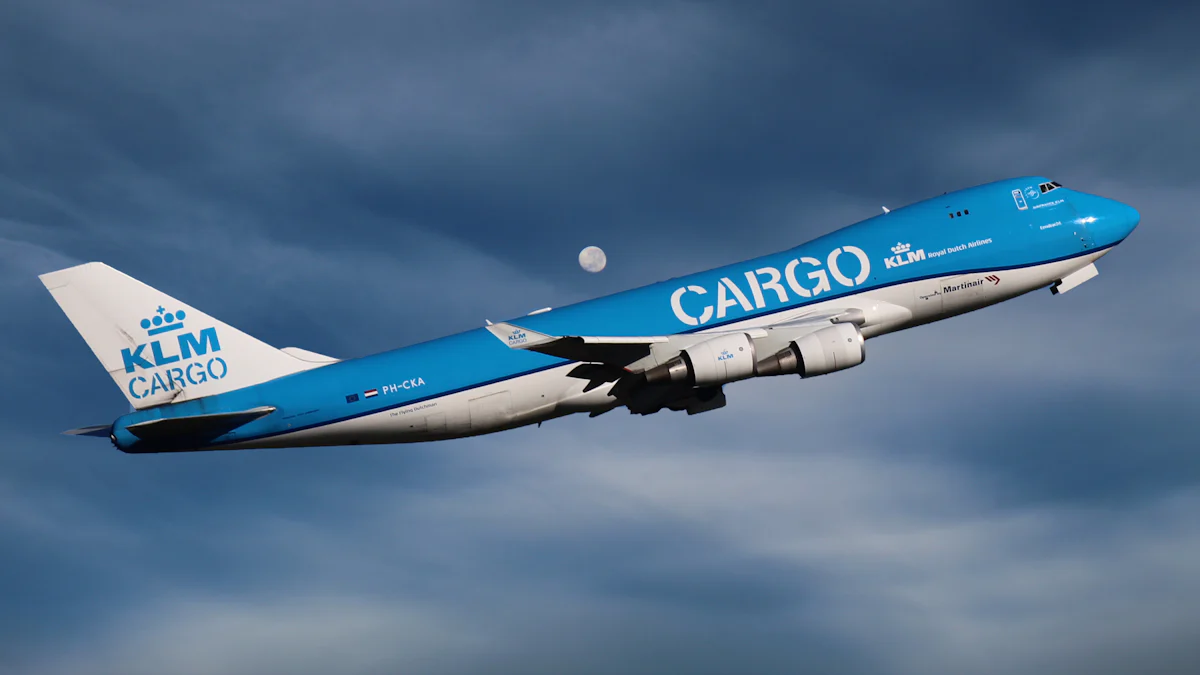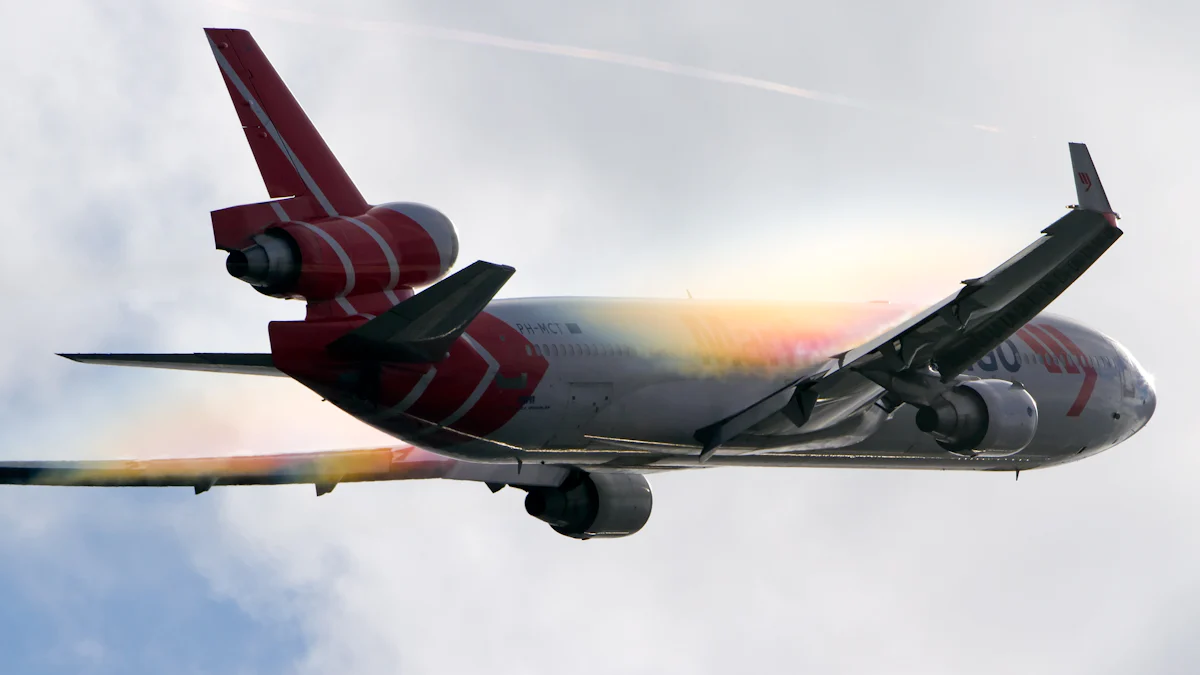Air Freight Soars into 2025: Preparing for a Peak Start

Air freight plays a vital role in global trade, ensuring swift and reliable transportation of goods across continents. As we approach 2025, its importance continues to grow, driven by surging e-commerce demand and evolving supply chain dynamics. Industry forecasts predict that air freight soars, with air cargo volumes expected to reach 72.5 million tonnes by 2025, reflecting a 5.8% annual growth. Preparing for peak seasons has become essential for businesses to meet rising demand, avoid inventory shortages, and maintain operational efficiency. With strategic planning, you can navigate these challenges and capitalize on the opportunities ahead.
Key Takeaways
E-commerce growth is driving air freight demand, with volumes expected to reach 72.5 million tonnes by 2025, making it crucial for businesses to adapt their logistics strategies.
Strategic planning is essential for managing peak seasons; analyzing historical data and securing capacity early can help avoid delays and inefficiencies.
Sustainability is a key focus in air freight, with companies adopting eco-friendly practices that not only reduce carbon footprints but also enhance brand reputation.
Monitoring fuel prices and regional surcharges is vital for managing shipping costs effectively, allowing businesses to anticipate rate changes and adjust strategies accordingly.
Investing in workforce development is critical to address labor shortages in the air freight industry, ensuring that employees are equipped to handle advanced technologies and complex logistics.
Technological advancements, such as automation and AI, are transforming air freight operations, improving efficiency and reducing operational costs.
Emerging markets present significant growth opportunities for air freight, driven by increasing e-commerce activity and industrialization, allowing businesses to diversify their operations.
Key Trends Driving Air Freight Soars in 2025

Supply and Demand Dynamics in Air Freight
The balance between supply and demand plays a pivotal role in shaping the air freight industry. In 2025, businesses are adapting to disruptions in ocean supply chains, leading to a stabilization of air freight volumes. These volumes are expected to account for 25-30% of total e-commerce shipments. This shift reflects how companies are leveraging air freight to ensure faster delivery and mitigate risks associated with other transportation modes.
E-commerce continues to drive demand, with global online sales fueling the need for efficient logistics solutions. However, nearly flat capacity growth in the sector has created sustained pricing pressure. As a result, you must stay ahead by closely monitoring supply and demand trends to optimize your shipping strategies and maintain cost efficiency.
Traffic Growth and Capacity Expansion
Global freight traffic is projected to grow at an annual rate of 4.1% through 2025. This growth highlights the increasing reliance on air freight for international trade. By 2025, air cargo volumes are predicted to rise by 5.8% year-on-year, reaching 72.5 million tonnes. This surge is largely supported by the booming e-commerce sector and heightened demand from regions like the Red Sea corridor.
To accommodate this growth, significant investments are being made to expand air cargo and ground handling capacities. Airlines and logistics providers are enhancing their infrastructure to meet the rising demand. For you, this means greater opportunities to access improved services and faster delivery times during peak seasons.
Sustainability and Environmental Innovations
Sustainability has become a critical focus for the air freight industry. As environmental concerns grow, companies are adopting innovative solutions to reduce their carbon footprint. From fuel-efficient aircraft to alternative energy sources, the industry is making strides toward greener operations.
You can expect to see advancements in sustainable packaging and optimized routing to minimize emissions. These innovations not only address environmental challenges but also align with consumer preferences for eco-friendly practices. By integrating sustainability into your logistics strategy, you can enhance your brand reputation while contributing to a more sustainable future.
Rate Trends and Economic Factors Impacting Peak Season
Fuel Prices and Regional Surcharges
Fuel prices significantly influence freight rates, especially during peak seasons. In 2025, fluctuating oil prices will continue to impact the cost of air freight. For instance, shipping rates from China to North America currently average $5.60 per kilogram, while shipments to Europe cost around $3.38 per kilogram. These figures reflect the rising expenses tied to fuel surcharges, which vary by region. Airports in the Middle East have seen a 10% increase in shipping costs to Europe within just one week, highlighting the volatility of these charges.
To manage these costs effectively, you should monitor fuel price trends and regional surcharges closely. This proactive approach can help you anticipate rate changes and adjust your freight strategies accordingly. By planning ahead, you can mitigate the financial impact of these fluctuations on your operations.
Currency Exchange Rates and Trade Policies
Currency exchange rates and trade policies play a pivotal role in shaping global air freight traffic. Exchange rate fluctuations can directly affect the cost of shipping goods across borders. For example, a weaker currency in a key exporting country may reduce freight costs for importers, while a stronger currency could increase expenses. Staying informed about these shifts allows you to optimize your shipping routes and schedules.
Trade policies also influence cargo flows and freight rates. Tariffs, trade agreements, and geopolitical developments can alter the demand for air freight services. As businesses navigate these complexities, understanding the implications of trade policies becomes essential. You can gain a competitive edge by aligning your logistics strategies with evolving regulations and market conditions.
Seasonal Rate Variations in Air Freight
Seasonal demand spikes create noticeable variations in air freight rates. During peak seasons, the influx of deliveries often leads to higher shipping costs. In 2024, spot rates experienced a 24% year-on-year increase due to double-digit demand growth. This trend underscores the importance of preparing for seasonal fluctuations in advance.
To avoid excessive costs, you should secure capacity early and explore alternative routes or modes of transportation. Collaborating with reliable logistics partners can also help you navigate these challenges. By adopting a strategic approach, you can ensure timely deliveries and maintain cost efficiency during high-demand periods.
Challenges and Opportunities for Air Freight in 2025

Labor and Workforce Challenges
The air freight industry faces significant workforce challenges as it moves into 2025. A shortage of skilled labor continues to impact operations, particularly in areas like cargo handling, ground operations, and maintenance. This shortage stems from an aging workforce and a lack of younger professionals entering the field. You may notice delays in shipments or increased costs as companies struggle to fill these critical roles.
To address this, businesses are investing in workforce development programs. Training initiatives focus on equipping employees with the skills needed to operate advanced technologies and manage complex logistics networks. By prioritizing workforce development, you can ensure smoother operations and maintain service quality during peak seasons.
Economic and Geopolitical Uncertainty
Economic and geopolitical factors create both challenges and opportunities for air freight. Trade tensions, shifting tariffs, and regional conflicts can disrupt supply chains and increase costs. For example, fluctuating trade policies may lead to sudden changes in demand for air freight services. You must stay informed about these developments to adapt your logistics strategies effectively.
On the other hand, economic growth in emerging markets presents opportunities for expansion. Regions like Southeast Asia and Africa are experiencing increased demand for air freight due to growing e-commerce activity and industrialization. By tapping into these markets, you can diversify your operations and reduce reliance on volatile regions.
Technological Advancements in Air Freight Operations
Technological innovation is transforming air freight operations, offering solutions to many of the industry's challenges. Automation and artificial intelligence (AI) are streamlining processes like cargo tracking, route optimization, and inventory management. These advancements enhance efficiency and reduce operational costs, allowing you to deliver goods faster and more reliably.
Digital platforms are also reshaping the logistics landscape. Companies like Amazon and Alibaba are leveraging technology to optimize their air cargo capabilities and meet the demands of modern consumers. By adopting similar tools, you can improve transparency, enhance decision-making, and stay competitive in a rapidly evolving market.
"The rise of e-commerce and digital commerce platforms is reshaping supply chain dynamics, accelerating the pace of deliveries, and increasing the demand for fast and flexible transportation solutions." – Kalea Texeira Zebhe, Air Freight and Logistics Expert
Sustainability-focused technologies are another area of growth. Innovations like fuel-efficient aircraft and alternative energy sources help reduce environmental impact while meeting consumer expectations for eco-friendly practices. By integrating these technologies into your operations, you can align with industry trends and build a more sustainable future.
The air freight industry in 2025 presents a dynamic landscape shaped by evolving trends, challenges, and opportunities. You must stay ahead by understanding key drivers like e-commerce growth, sustainability innovations, and technological advancements. Proactive planning remains essential. By anticipating market shifts and preparing for peak seasons, you can avoid costly disruptions and maintain efficiency.
FAQ
What is driving the growth of air freight in 2025?
E-commerce expansion and the need for faster delivery solutions are the primary drivers. Businesses are increasingly relying on air freight to meet consumer expectations for quick and reliable shipping. Additionally, disruptions in other transportation modes, such as ocean freight, have pushed companies to adopt air freight as a dependable alternative.
How can you prepare for peak seasons in air freight?
Preparation starts with analyzing historical data and forecasting demand. Securing capacity early and collaborating with reliable logistics partners like JUSDA ensures smooth operations. Leveraging advanced technologies, such as real-time tracking and automated systems, also helps you manage peak season complexities effectively.
What role does sustainability play in air freight?
Sustainability has become a critical focus for the industry. Companies are adopting fuel-efficient aircraft, alternative energy sources, and eco-friendly packaging to reduce their environmental impact. By integrating these practices into your logistics strategy, you can align with consumer preferences and contribute to a greener future.
How do fuel prices affect air freight rates?
Fuel prices directly influence air freight costs. Fluctuations in oil prices lead to changes in fuel surcharges, which vary by region. Monitoring these trends allows you to anticipate rate adjustments and plan your shipping strategies accordingly.
What are the key challenges facing the air freight industry in 2025?
The industry faces workforce shortages, economic uncertainties, and geopolitical tensions. Skilled labor shortages impact cargo handling and ground operations. Trade policies and regional conflicts create supply chain disruptions. Staying informed and proactive helps you navigate these challenges.
How can JUSDA help optimize your air freight operations?
JUSDA offers advanced supply chain management tools, such as the JusLink Intelligent Supply Chain platform. These tools provide real-time tracking, route optimization, and inventory management. By leveraging JUSDA’s technology-driven solutions, you can enhance efficiency and maintain cost control.
Why is workforce development important in air freight?
A skilled workforce ensures smooth operations, especially during peak seasons. Training programs equip employees with the knowledge to handle advanced technologies and complex logistics networks. Investing in workforce development improves service quality and operational efficiency.
What are the benefits of using technology in air freight?
Technology streamlines operations, reduces errors, and enhances productivity. Tools like AI and automation improve cargo tracking, route planning, and inventory management. Adopting these innovations helps you stay competitive and meet customer expectations.
How do seasonal rate variations impact air freight costs?
During peak seasons, increased demand leads to higher shipping rates. Securing capacity early and exploring alternative routes can help you manage these costs. Partnering with experienced logistics providers ensures timely deliveries without excessive expenses.
What opportunities exist in emerging markets for air freight?
Emerging markets, such as Southeast Asia and Africa, offer significant growth potential. Rising e-commerce activity and industrialization drive demand for air freight services. Expanding into these regions diversifies your operations and reduces reliance on volatile markets.
See Also
Discovering 2024 Innovations in Sea Freight Logistics
Transforming Logistics with AI in Supply Chains
Get Prepared: Unveiling New Transport Tech for Supply Chains
